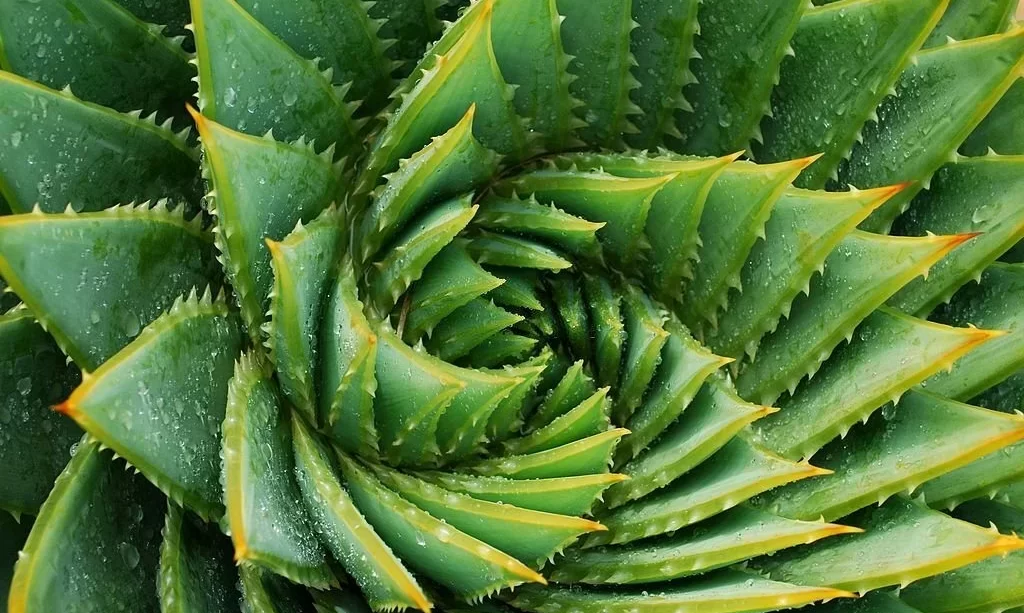Aloe, with its striking, fleshy leaves and reputation for soothing burns and skin irritations, is a plant familiar to many. Yet, there exists a persistent misconception that often lingers in the minds of plant enthusiasts and novices alike: Is aloe a type of cactus? In this exploration, we venture into the realm of botany to uncover the truth behind the aloe-cactus connection. Beyond the soothing gels and ornamental charm, we delve into the heart of aloe’s botanical identity and seek to clarify whether it shares its lineage with the iconic cacti that thrive in arid landscapes. Join us on this journey as we unravel the scientific classification and unique characteristics that define the aloe plant.
- LIVE INDOOR PLANT: Bring home beautiful Aloe Vera to add a relaxing, calm feel to any space. Aloe houseplants are natural air purifiers that help keep your indoor air fresh. Perfect size decor for tabletops, shelves, living rooms, offices, and bedrooms
- GREAT DECOR FOR ANY SPACE: Whether you’re looking to spruce up your home office or add a touch of greenery to your living room, indoor Aloe Vera plants have a timeless appeal. Unique statement piece that instantly infuses decor aesthetic with personality
- ELEVATE MOOD & WELLBEING: Plants make us happy. They give us life, fresh air and a sense of calm – all of which have the ability to lift your mood and improve your wellbeing. NASA studies show having plants improves mood, creativity and reduces stress
- FRESH FROM FARM: Every plant is packed with care and delivered direct from our farm to your home. Aloe height is approximately 12-inches tall, measured from the bottom of the pot to the top of the plant. Potted in a grower pot
- PLANTS MAKE GREAT GIFTS: Plants can be delivered to your loved ones for any occasion, including birthdays, anniversary, and housewarming. Enjoy peace of mind that every plant is well packaged, farm fresh, and ready to impress with your gift message
Aloe
To appreciate the distinction between aloe and cacti, we must first grasp the essence of aloe as a distinct group of succulent plants:
- A Rich Family: Aloe is a diverse genus within the family Asphodelaceae, comprising over 500 recognized species. These succulents are celebrated for their diverse shapes, sizes, and uses, ranging from Aloe vera with its renowned medicinal properties to Aloe arborescens, a striking ornamental species.
- Leafy Marvels: One of aloe’s most recognizable features is its fleshy, lance-shaped leaves. These leaves are adapted for storing water, making aloe well-suited to arid and semi-arid environments. The succulent leaves serve as reservoirs for moisture, allowing the plant to thrive even in harsh conditions.
- Global Presence: Aloe is not confined to a single region but exhibits a global presence. It can be found in a variety of habitats, from African savannas to arid deserts and even as houseplants in homes worldwide. This adaptability is a testament to aloe’s resilience.
- Versatile Uses: Beyond their visual appeal, aloe plants are celebrated for their diverse uses. Aloe vera, in particular, is renowned for the clear, gel-like substance contained within its leaves, which is prized for its soothing properties on burns, skin irritations, and various skin conditions.
As we delve deeper into the botanical intricacies, we will uncover why aloe is distinctly different from the cacti it is often mistakenly associated with and clarify the basis for its rightful place in the world of succulent plants.
Cacti
Before we explore whether aloe is a cactus, it’s essential to gain a comprehensive understanding of cacti themselves:
- A Unique Family: Cacti belong to the Cactaceae family, a distinctive group of succulent plants. This family comprises over 2,000 species, each with its own peculiarities and adaptations.
- Arid Environments: Cacti are renowned for their affinity for arid regions, particularly deserts. Their remarkable ability to thrive in these harsh environments is attributed to their specialized adaptations for water conservation.
- Distinctive Features: Cacti are easily recognizable due to their unique features. They typically have modified leaves, often reduced to spines, which help reduce water loss and provide protection. Their stems are where photosynthesis primarily occurs, allowing them to store water and produce energy even during droughts.
- Showy Blooms: Many cacti species produce vibrant and showy flowers, often in striking colors like red, pink, and yellow. These blossoms are not only aesthetically pleasing but also attract pollinators.
Botanical Classification of Aloe
To clarify the relationship between aloe and cacti, let’s delve into the precise botanical classification of aloe:
- Family Asphodelaceae: Aloe plants are categorized within the family Asphodelaceae. This family encompasses a wide array of plants beyond aloe, including species like Haworthia and Gasteria.
- Genus Aloe: Within the family Asphodelaceae, aloe is a genus that boasts numerous species, each with distinct characteristics. The most well-known among them is Aloe vera, prized for its medicinal properties.
- Not Cacti, but Succulents: The key distinction here is that aloe, while sharing the succulent trait with cacti, belongs to an entirely different botanical family. Aloe’s genetic lineage places it in a separate category from cacti, despite the surface-level resemblance they may share due to succulence.
Understanding this botanical classification helps us appreciate that aloe and cacti are indeed distinct plant groups, each with its own unique traits and adaptations. While they may both thrive in arid environments and exhibit succulent characteristics, their genetic lineages place them in separate corners of the plant kingdom. This distinction forms the basis for our exploration into whether aloe is truly a cactus or not.
Key Differences Between Aloe and Cacti
To definitively answer whether aloe is a cactus, let’s explore the key differences that set these two plant groups apart:
- Botanical Families: The most fundamental distinction lies in their botanical families. Aloe belongs to the Asphodelaceae family, while cacti are part of the Cactaceae family. This separation places them in entirely different taxonomic categories, dispelling any notion of them being the same.
- Leaf Structures: Aloe plants typically have fleshy, elongated leaves, which serve as water reservoirs. In contrast, cacti are renowned for their modified leaves, often transformed into spines or reduced to tiny scales. The absence of spines on aloe leaves is a clear departure from the characteristic spines of cacti.
- Growth Patterns: Aloe plants tend to grow in rosettes or clusters, with leaves emerging from a central point. Cacti, on the other hand, exhibit diverse growth patterns, from tall, columnar forms to low-spreading varieties. This diversity in growth habits is distinct from the typically organized structure of aloe.
- Floral Differences: While both aloe and cacti can produce showy flowers, the floral structures and shapes differ significantly between the two. Aloe flowers are typically tubular or bell-shaped, while cacti can bear a wide array of flower shapes and sizes.
Common Misconceptions
The confusion surrounding whether aloe is a cactus can be attributed to some common misconceptions:
- Succulence: Both aloe and cacti exhibit succulence, which is the ability to store water in their tissues. This shared trait might lead to the assumption that they are closely related.
- Similar Growing Conditions: Aloe and cacti often thrive in similar arid or semi-arid environments, further fueling the misconception that they are related.
- Ornamental Use: Both aloe and cacti are favored as ornamental plants, often grown indoors and in xeriscape gardens. Their ornamental appeal can sometimes overshadow their distinct botanical identities.
Conclusion
In conclusion, the question of whether aloe is a cactus can be definitively answered: No, aloe is not a cactus. Despite their shared succulent characteristics and similar growing conditions, aloe and cacti belong to entirely different botanical families and exhibit distinctive features that set them apart.
Understanding these key differences not only clarifies the misconception but also enhances our appreciation for the diversity of the plant kingdom. Aloe, with its unique properties and versatile uses, stands as a remarkable succulent in its right, distinct from the iconic cacti that populate arid landscapes. This knowledge empowers plant enthusiasts to cultivate and care for these remarkable species with greater accuracy and appreciation.




